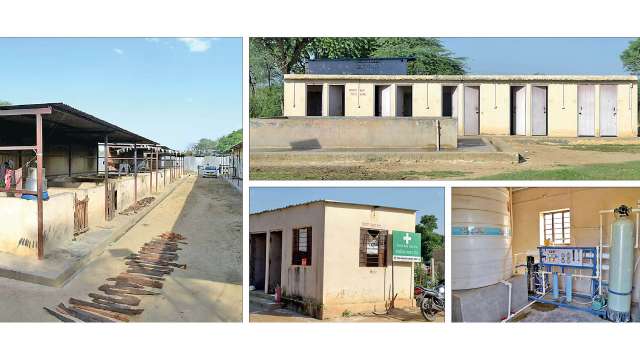A city within city: How the biggest man-management project took off
Clad in a green fluorescent jacket and hard hats, these motley group of workers remain a fixture across the breath of Jaipur, as work progresses at fast pace along the 47-kilometre-long Dravyawati riverfront. The ambitious project to revive the lost river for Dravyawati has been one of the biggest labour management project in city’s history.
Till date nearly 16.7 million man-hours have been engaged on the project as these men work round the clock to bring the riverfront to life out of a neglected past and a devastated present.
“There are more than 7,500 workers presently employed at the riverfront. Of these, nearly 1,500 are local residents while most come from other parts of the state and country,” says Colin Batchelor, Dravyawati River project director at TPL SUCG consortium.
Each day these men arrive and leave for their work sites in fleet of buses. As they work hard to accomplish the task, the project managers too have to pitch in extra efforts from arranging the labour to management of their accommodation and logistics. This involved setting up of couple of labour camps and renting out hostels and apartments.
In anticipation of the considerable workforce requirement the contractors have initially established their first labour camp on a rented location at Goner. The camp has separate kitchen and lavatory facilities along with a RO water-filtration plant and first aid room. The camp was built to accommodate 400 workers but as the requirement grew, such camps were developed as number of employed labour continued to rise with advancement of the project.
In the initial phase of the project, most work involved measurement and stone pitching for which adequate workforce was available locally and only few hundred of these were from other cities. However, as the project went on a fast track couple of months ago, the labour numbers almost doubled within a fortnight. This left the developers with little option to build new camps and they went on to hire available hostel and apartments for the new recruits.
“There are overall 21 locations at which labour accommodations have been put up, all of these are facilitated with RO purified water, electricity and sanitation facilities,” informs, Dyutish Banerjee, senior manager planning at Tata Projects Limited.
Allotment of accommodations has been made in accordance of the work site and shift timings on which the labourers are deployed to ensure minimum time and cost of logistics. Each morning and evening buses queue outside these spots as workers switch shifts. The facilities though come free of cost for the workers, while the developer firm has so far spent around Rs 6 crore on operating and maintain them.
The state government is racing against time to complete the dream project of chief minister Vasundhara Raje that shall see a 300-year-old river return to life after years of neglect and encroachment reduced it to a rainwater-fed nullah.

from Daily News & Analysis https://ift.tt/2xJ7Sxy


No comments: